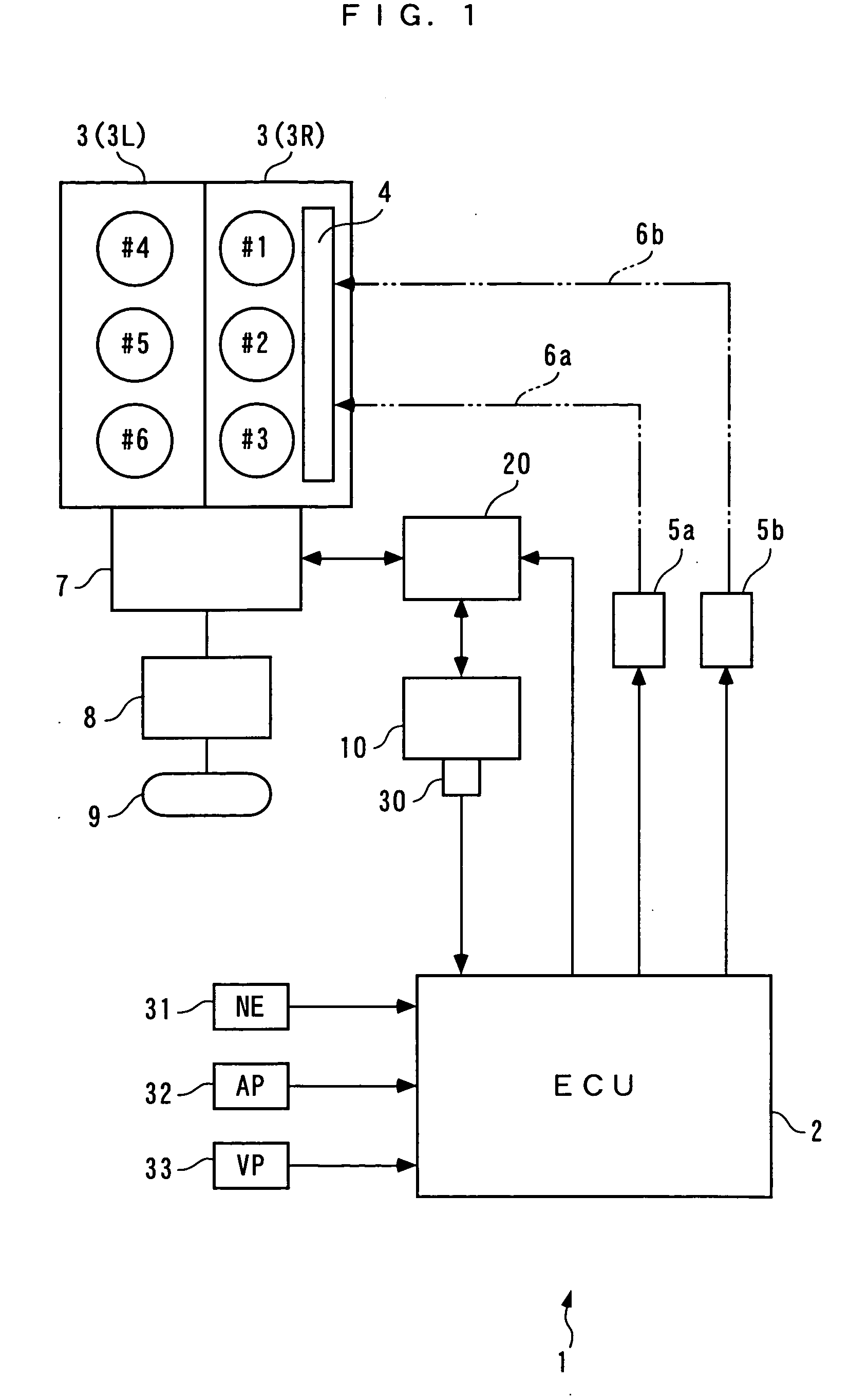Control system for variable-cylinder internal combustion engine
a control system and internal combustion engine technology, applied in the direction of electric control, combustion engines, machines/engines, etc., can solve the problems of making vibration and noise so large that the body of the occupant can sense it, and achieve excellent fuel economy and suppress vibration and nois
- Summary
- Abstract
- Description
- Claims
- Application Information
AI Technical Summary
Benefits of technology
Problems solved by technology
Method used
Image
Examples
Embodiment Construction
[0028] Hereafter, a control system for a variable-cylinder internal combustion engine, according to a first embodiment of the present invention, will be described with reference to the drawings. Referring first to FIG. 1, there is schematically shown the arrangement of a control system 1 according to the present invention, and a variable-cylinder internal combustion engine (hereinafter simply referred to as “the engine”) 3, which is controlled by the control system 1.
[0029] The engine 3 is a V-type six-cylinder DOHC gasoline engine installed on a vehicle (not shown), and includes a right bank 3R of three cylinders #1, #2, and #3 (a plurality of cylinders, some of the plurality of cylinders), and a left bank 3L of three cylinders #4, #5, and #6 (the plurality of cylinders). Further, the right bank 3R is provided with a cylinder-deactivating mechanism 4 for carrying out a partial-cylinder operation mode, described hereinafter.
[0030] The cylinder-deactivating mechanism 4 is connected...
PUM
 Login to View More
Login to View More Abstract
Description
Claims
Application Information
 Login to View More
Login to View More - R&D
- Intellectual Property
- Life Sciences
- Materials
- Tech Scout
- Unparalleled Data Quality
- Higher Quality Content
- 60% Fewer Hallucinations
Browse by: Latest US Patents, China's latest patents, Technical Efficacy Thesaurus, Application Domain, Technology Topic, Popular Technical Reports.
© 2025 PatSnap. All rights reserved.Legal|Privacy policy|Modern Slavery Act Transparency Statement|Sitemap|About US| Contact US: help@patsnap.com



